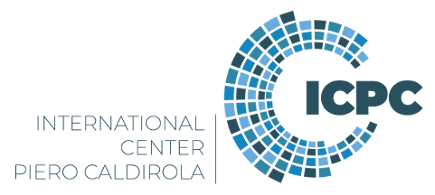Speaker
Description
Neutron Emission Spectroscopy is a key diagnostic technique in nuclear fusion research, enabling the characterization of fuel ion populations in fusion plasmas. The state-of-the-art instrumentation for neutron spectroscopy in deuterium plasmas relies on the time-of-flight (TOF) technique [1].
However, despite its performance, it necessitates the deployment of large-scale systems. Recent investigations on compact alternatives have focused on chlorine-based scintillators, which exploit the 35Cl(n,p)35S nuclear reaction to produce a Gaussian-shaped response in the neutron
energy spectrum. Among the promising candidates, CLYC scintillators [2, 3] offer good energy resolution but are constrained by limited count rate capabilities (tens of kHz). Alternatively, LaCl₃:Ce scintillators uses the same nuclear reaction, but combine similar energy resolution with
faster scintillation decay times (<1 μs), supporting higher count rates. However, LaCl₃:Ce presents significant challenges in particle discrimination, and traditional pulse shape discrimination (PSD)
methods offer limited separation performance.
To address these limitations, an advanced particle identification algorithm based on Fast Fourier Transform (FFT) analysis was introduced in [4], enhancing discrimination accuracy. Nonetheless, this method (like conventional PSD techniques) relies on user-defined selection regions in the PSD vs. energy space, introducing operator-dependent variability. This limitation may pose a significant challenge to real-time implementation on FPGAs. To overcome this possible challenge in view of real-time applications, an alternative discrimination algorithm based on convolutional neural networks (CNNs) is under development. This algorithm
enables the classification of α, γ, and neutron-induced events, as well as the recovery of pile-up pulses, in an automatic and operator-independent way. The pile-up recovery is particularly relevant during transient plasma phenomena that produce bursts of neutrons, potentially resulting in a high incidence of pile-up events. The algorithm was optimized
for fast neutron detection characterized by α and γ background. Particular attention has been paid to facilitate potential future implementation on FPGA by employing algorithms compatible with hardware realization.
The neural network models have been trained and tested using experimental datasets from multiple sources: the intrinsic radioactivity of the LaCl₃ crystal, γ-ray calibration sources, and neutron measurements conducted at the Physikalisch-Technische Bundesanstalt Ion Accelerator Facility
(PIAF) [5] and the Neutron Irradiation Laboratory for Electronics (NILE) [6]. At these facilities, neutron measurements across different energies (from 2 to 5 MeV range and 14.8 MeV) were obtained using various beam-target combinations, including proton and deuteron beams with Ti(T)
and D₂-gas targets, and at different detection angles.
References:
[1] M. Gatu Johnson et al. 2008, The 2.5-MeV neutron time-of-flight spectrometer TOFOR for
experiments at JET, Nucl. Instrum. Methods Phys. Res. A 591 417–30
[2] D. Rigamonti et al. 2019, First neutron spectroscopy measurements with a compact C7LYC
based detector at EAST, J. Instrum. 14 C09025
[3] Nocente M. et al. (ASDEX Upgrade Team and Eurofusion Tokamak Exploitation Team), 2024
COSMONAUT: A COmpact spectrometer for measurements of neutrons at the ASDEX upgrade
tokamak, Rev. Sci. Instrum. 95 083501
[4] D. Rigamonti et al. 2025, Measurement Science and Technology, 36 015907
[5] S. Röttger et al. 2009, Fast neutron response characterization of an EJ-276 plastic scintillator for
use as a neutron monitor AIP Conf. Proc. 1175 375–81
[6] C. Cazzaniga et al. 2023, IEEE Transactions on nuclear science, 70 1616–24

